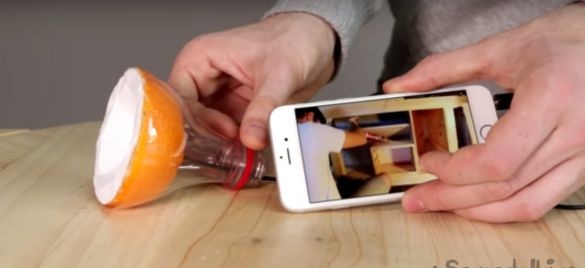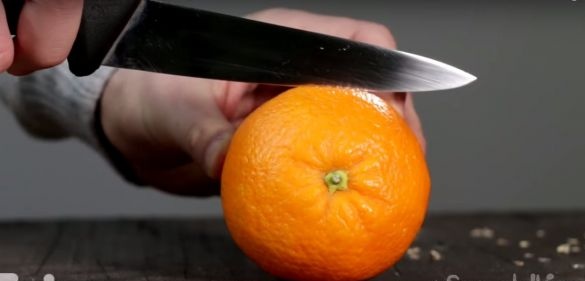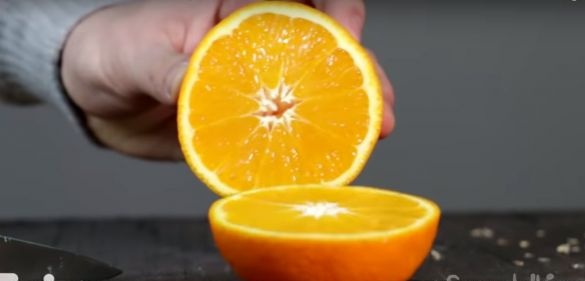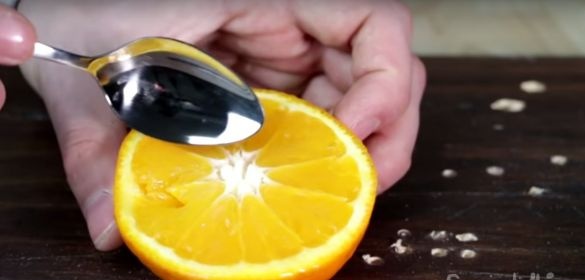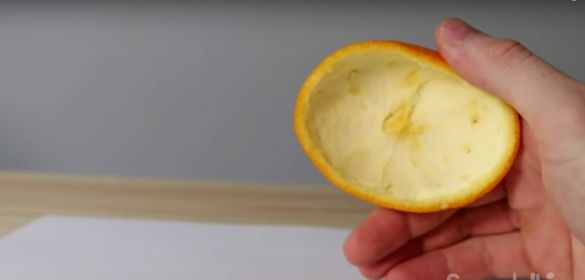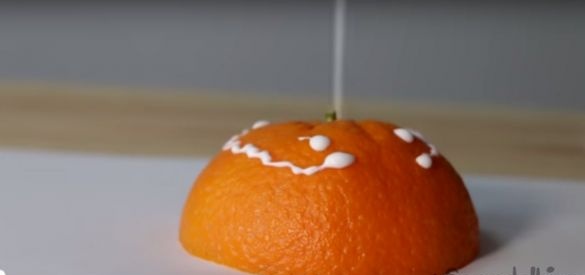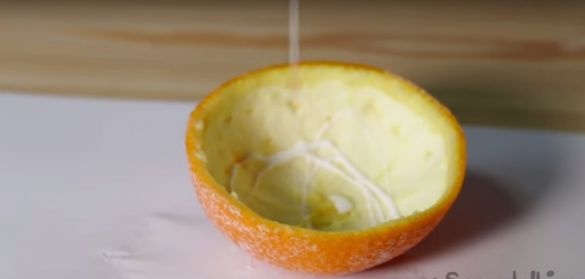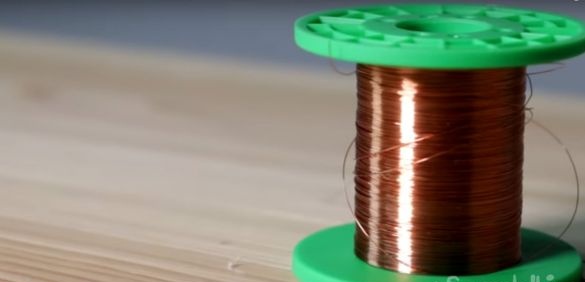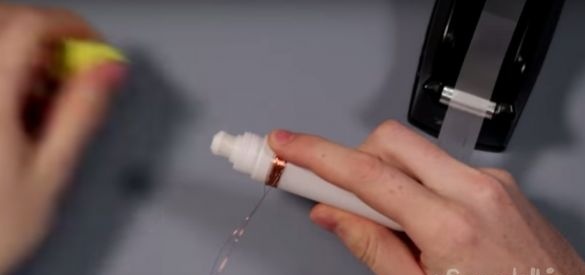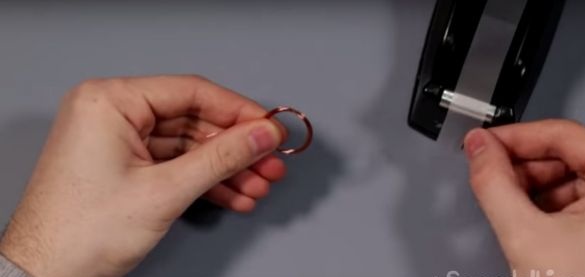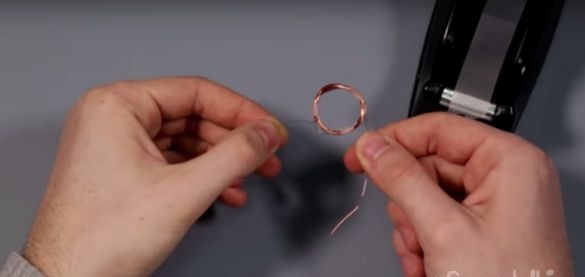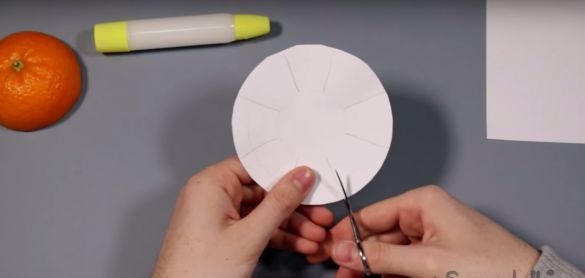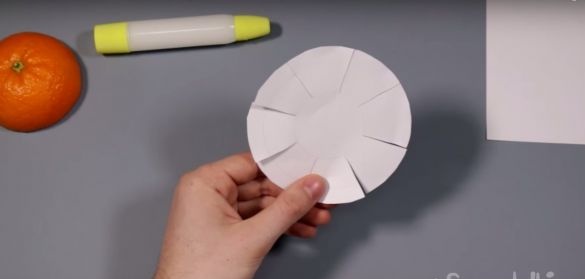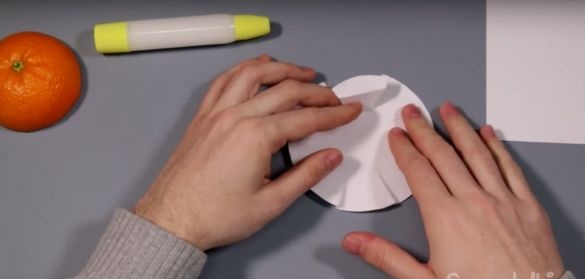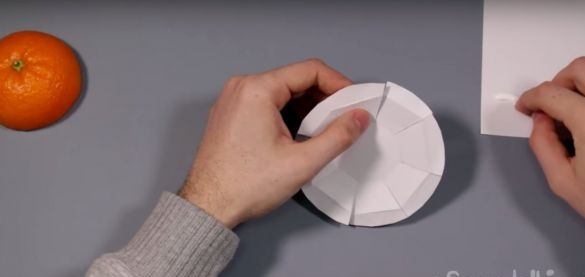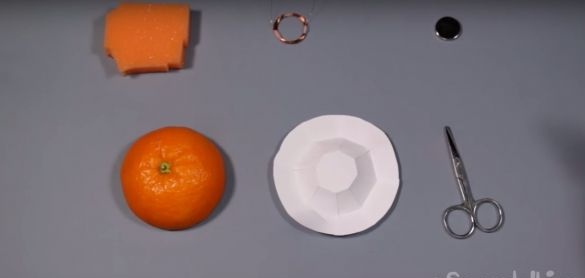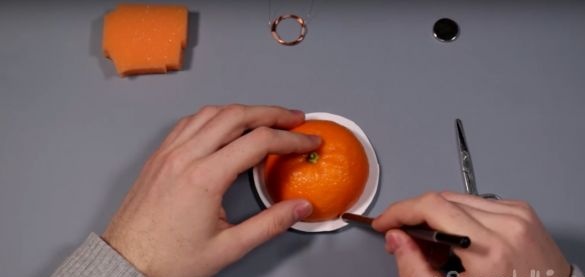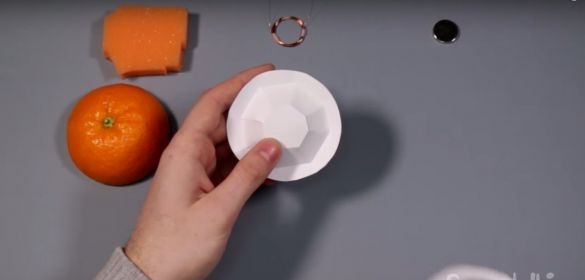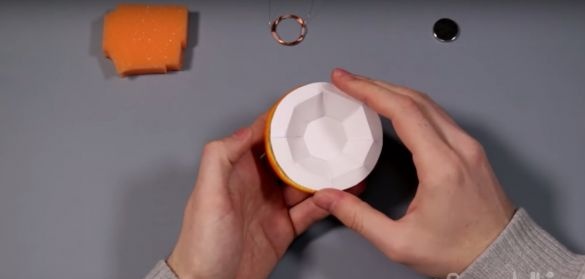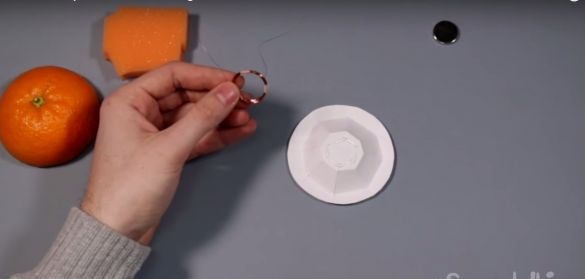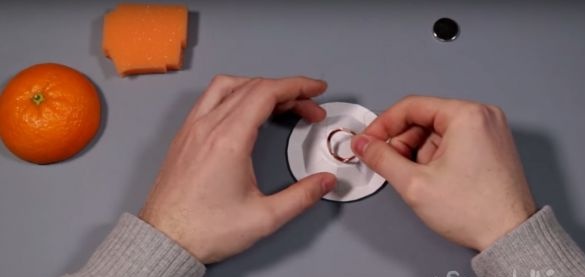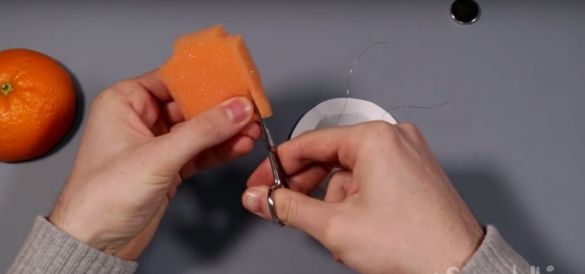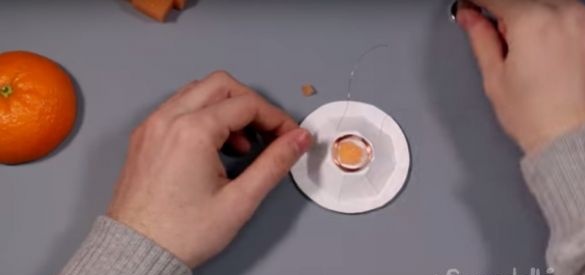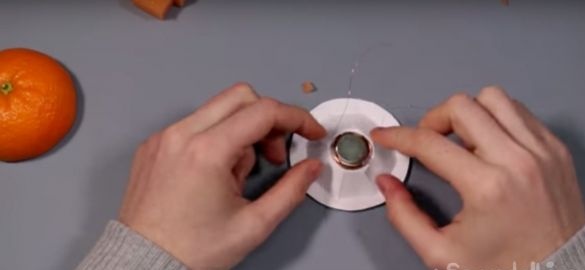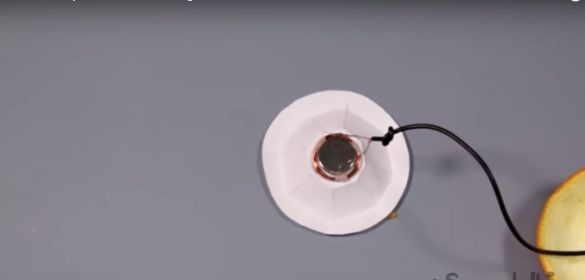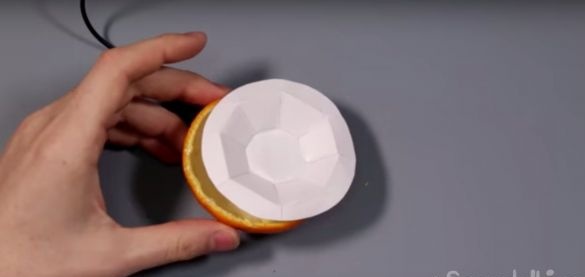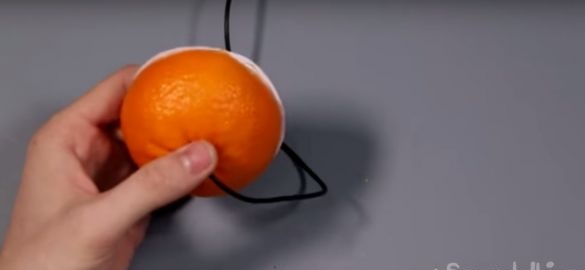Materials
1. Orange
2. Copper wire
3. Scotch tape
4. Paper
5. Neodymium magnet
6. A piece of sponge
7. A wire with a connector for music
Instruments
1. Kitchen knife
2. Scissors
3. Pencil
4. Hot glue
Step 1
First you need to take an orange and cut it into two parts
Step 2
Using a spoon, you need to pull out all the flesh from it.
Step 3
It is necessary to thoroughly grease it from the outside and from the inside with PVA glue, and then let it dry
Step 4
While the orange dries, let's do electronics. Take the wire (if there is no skein, you can pull it out of the old unnecessary cable) and carefully wrap it around a thick marker or glue pencil
Then remove and glue a few with a piece of tape so that the wire does not unwind
Step 5
From a piece of paper, cut a large circle and draw several lines, as shown in the photo
We make cuts and bend as in the photo
After we bent all the "petals", glue them together
Now apply the orange and cut off the unnecessary.
This part of the speaker is called the membrane.
Step 6
Now the most crucial part.
1. Lubricates the membrane with glue and glue our wire ring
2. Cut a small piece from the sponge and glue it to the center of the ringlet
3. Now glue the magnet to the sponge
In the end, you should get such a design
Step 7
The last step - we take the cable and strip two wires. Then we wind them with the ends of the wire ring
And glue the membrane to the orange
Well, that’s all, it remains only to connect our speaker to the phone (computer) and turn on your favorite melody.
How it works?
Everyone noticed that if you pick up, say, a twig and start waving it quickly, it makes a sound. If you start to wave faster - the sound becomes higher. Thickness and size also affect it.
So, the principle of operation of an ordinary standard speaker is based on these phenomena.
The signal entering the coil, which is located in the electromagnetic field of a permanent magnet, fluctuates depending on the amplitude of the received signal.And it swings the membrane (connected to the coil), which creates sound due to vibrations.
Author Video

